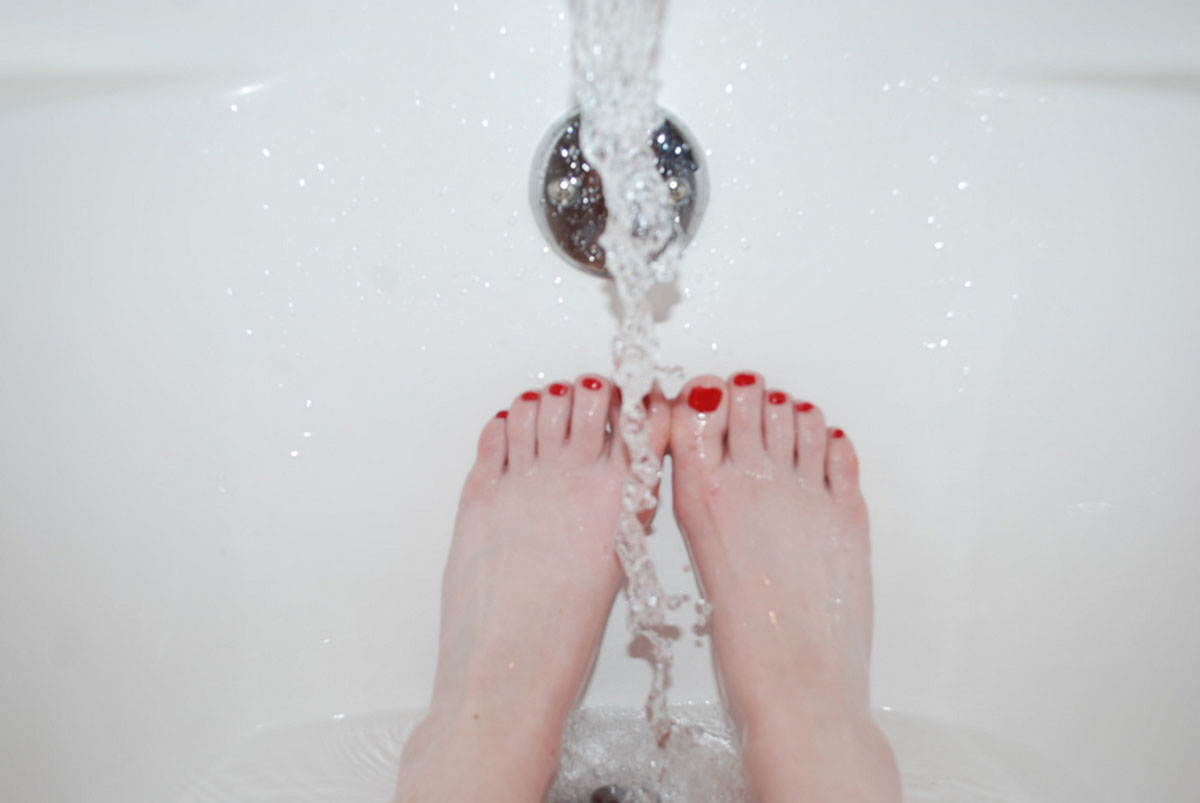Everyone gets cold hands and feet, especially during cold days in winter. That's completely normal, but what if you get cold hands and feet constantly, even during warm weather? Should you be worried?
A lot depends on whether your hands and feet are cold because of the weather, or the temperature inside or outside, or sometimes it's because of injury and even disease. Knowing the difference between what’s considered normal and what is not will help you seek the advice or treatment you need if it’s necessary. That's why it's important to be able to know why you're hands and feet are cold, and when you should go see a doctor.
Getting cold hands and feet isn't just to do with the temperature, and you could very well be experiencing a medical problem. It might not be normal if you have to walk around in the middle of summer with wooly socks because your feet are cold, after all.
What exactly do you need to know about what causes cold hands and feet, and when should you be worried?

Like other mammals, humans are warm blooded and prefer a warmer environment, so when winter strikes and the temperature drops, the body does whatever it can to try and stay warm. As a result of cooler temperatures, the blood circulation decreases, mainly in the arms, the legs, the nose and the ears. Quite often the first thing you notice is the cold nose!
Cold Hands And Feet Due to Disease
There are several diseases and medical conditions that can cause the feet and hands to become cold. Sometimes it is nothing to be concerned about. But, if it is a constant feeling of coldness or the skin has changed its appearance and color, you should definitely seek medical advice.
Anemia
Anemia is caused a deficiency of iron in the blood. Often this condition goes unnoticed until other problems occur, such as cold hands and feet. If your extremities stay cold after attempts to warm them, your doctor should check your iron levels.
Diabetes
Diabetes is now one of the most prolific diseases in the human population, and is one of the biggest concerns in the health domain due to the prevalence and the associated conditions and manifestations. One of these is the effect it has on the circulatory system, the thyroid and blood pressure, all of which can cause cold feet and hands.
Lupus
Lupus is a systemic disease, meaning it affects many different parts of the body, including blood vessels. The blood vessels in the hands and feet are very small, and when they are affected by the lupus, the blood flow is restricted, leading to coldness of these body parts.
Primary Raynaud’s Disease
This particular form of Raynaud’s is a genetic disorder, inherited from a parent, and it has no underlying medical reason for causing cold hands and feet. Raynaud’s can be triggered by different factors, such as exposure to cold water, emotional stress, cold exposure, or touching a cold object.
See Also: Cold Hands: Raynaud's Disease
Secondary Raynaud’s Disease
This form of Raynaud’s can be a more serious problem, as it is usually caused by underlying diseases, such as scleroderma or lupus. Again, the blood vessels are affected leading to cold hands and feet.
- Scleroderma
- Buerger’s Disease
- Thyroid disease
- Nervous system disorders
- Poor circulation
Other Causes Of Cold Hands And Feet
Cold And Immersion Injuries
These types of injuries are often severe, and can be difficult to treat if medical intervention is not sought quickly. A cold injury is due to cooling of the skin. An immersion injury occurs when damage is done to the blood vessels and nerves by exposure to wet or cold conditions for an hour or more.

Frostbite
Frostbite is caused by extreme exposure to cold, more often than not in snow or ice conditions. It is often seen in those who become trapped on mountains in bad weather. It is usually diagnosed purely by appearance.
The whiteness may appear more white-purple or white-yellow. There is no sensation in the parts that are frostbitten, but there may be some tingling during the process of freezing. If they are thawed quickly, it may be painful and uncomfortable. Swelling and blisters eventually appear and the affected tissues turn black as they die.
Frostnip
Frostnip is a less severe form of frostbite. Exposure to cold weather can cause frostnip to areas on the face, toes, fingers and ears. The skin turns pale in color, and can tingle, burn or be painful. Numbness is usually present, but as the affected body parts are warmed up, all symptoms subside and no further treatment is needed.
Immersion Injury
With an immersion injury the affected areas turn red at first. Then the skin pales, and becomes swollen. At this point tingling or numbness is usually experienced. Within a few days, the area may develop blisters, breakdown of the skin, or in severe cases, can even turn to liquid.
Pernio
Exposure to cold for a lengthy period of time can cause a condition called Pernio. This is a rash that can affect the hands, feet, legs, toes or ears. The skin may be either blue or red, and scaly lumps may appear. At its most severe, skin breakdown and blistering may occur, but generally the main symptoms are burning or itching.
Cryoglobulins
These are proteins that can turn into solids or gel-like substances in the blood when cold. Cryoglobulinemia is the medical condition regarding the cryoglobulins in the blood, and exposure to cold can cause the fingers and toes to become a bluish color.
Cold Urticaria
This is probably the mildest cold injury that can take place. It is a response of the skin to the cold, leading to an itchy rash of red bumps, like hives.
Treatment
Disorders like Raynaud’s phenomenon can be treated with medications to help prevent severe attacks. Injuries like frostbite however, need much more intensive treatment. Often the dead tissue needs o be removed, and in some cases, the affected fingers, toes, and other body parts may need to be amputated.
Be careful taking over the counter medications, as some of these can further constrict blood vessels, making you prone to developing cold hands and feet. If the coldness is mild, try warming your feet and hands up by running warm water over them and gently massaging the affected area.
See Also: Urticaria (Hives or Angioedema) info
If however you have had chronically cold hands and feet, see your medical practitioner for advice. If frostbite is apparent or you have been exposed to cold and wet conditions for more than an hour, you should report to your local emergency department for urgent investigation and potential treatment.
- Photo courtesy of kizzzbeth via Flickr: www.flickr.com/photos/31403417@N00/6610183315
- Photo courtesy of LivyAnn via Flickr: www.flickr.com/photos/olivia-townsend/4243857066


Your thoughts on this